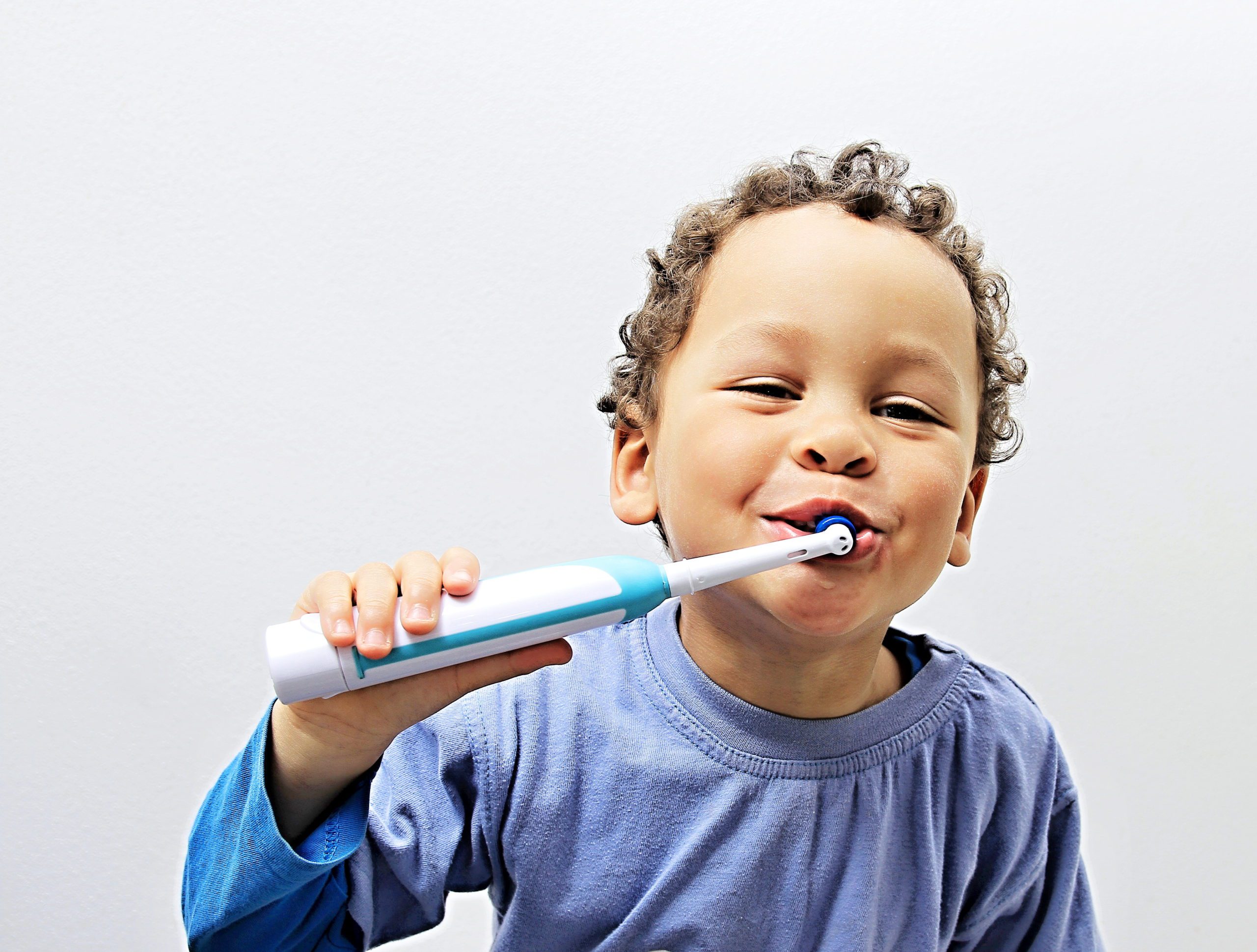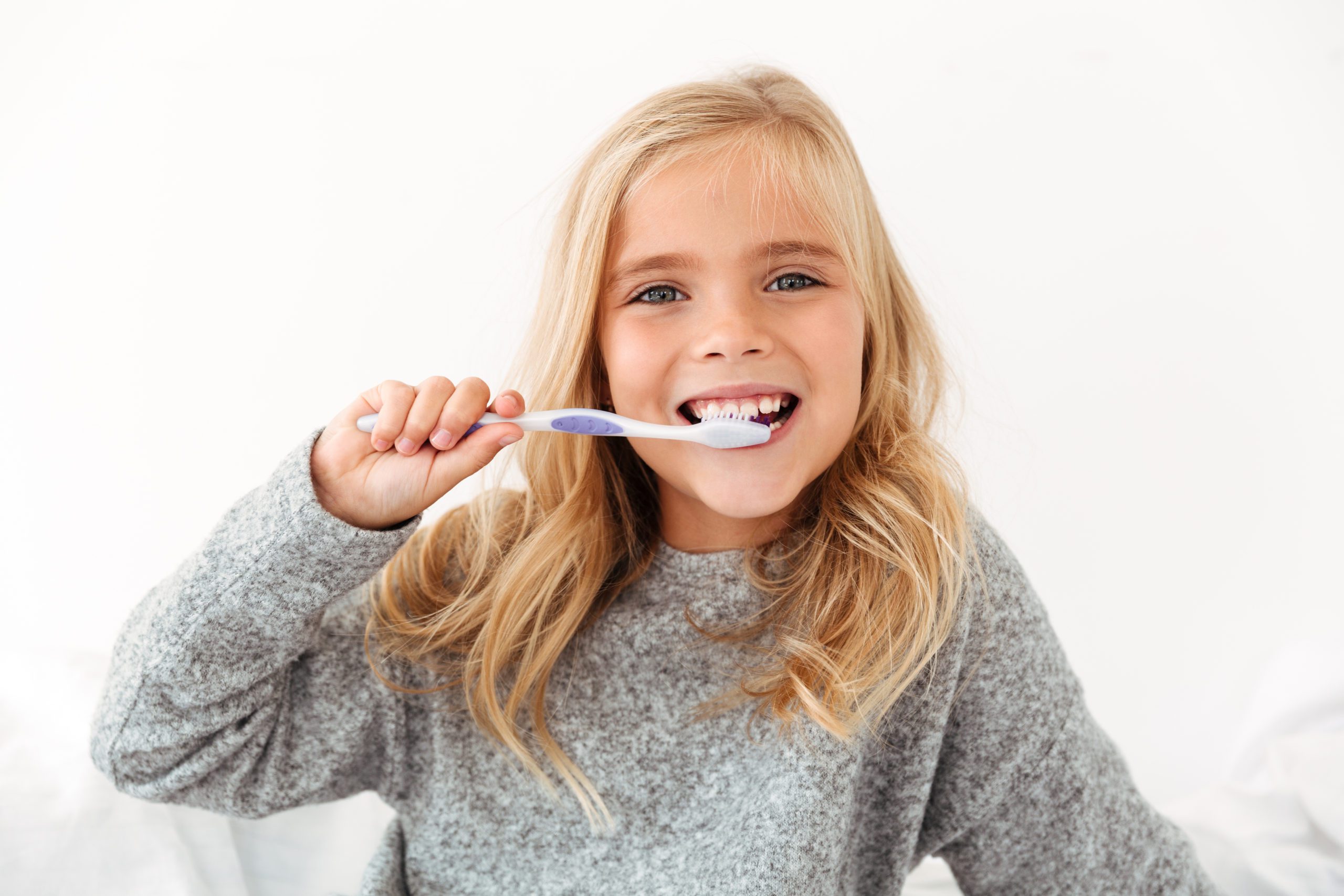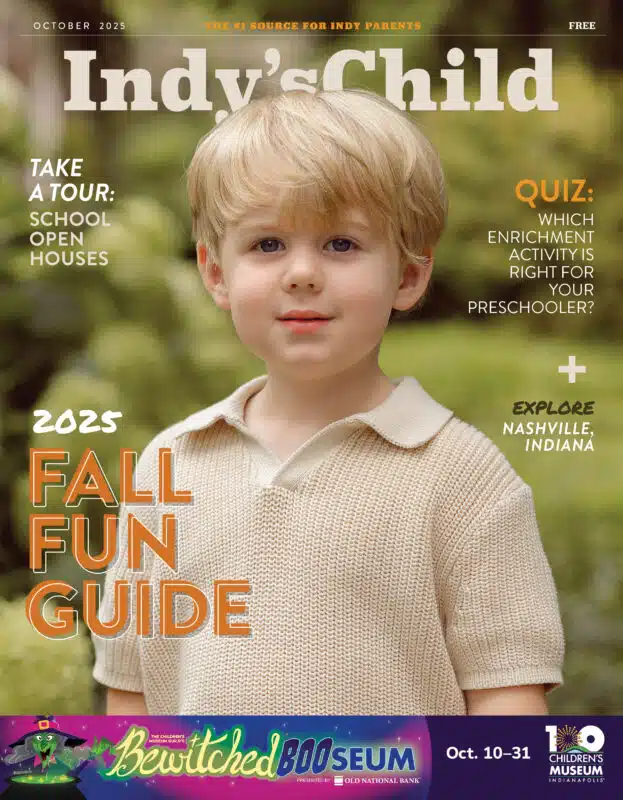Healthy teeth are vital to your child’s health, and it’s important to establish good oral care habits at a young age. But how can you get your kids on board the healthy teeth train?
“Brushing your teeth with your children is one way to set a great example,” says Tasha E. Hall, DMD MSD, of Hallmark Orthodontics in Noblesville. “Because primary teeth play a key role in your child’s ability to chew, talk and smile, it is crucial that adults guide them in healthy habits.”
Your child should have their first dental visit by their first birthday, Hall says. “A check-up is typically recommended on 6 month intervals, however this may vary based on your child’s specific dental needs.”
The sooner you begin brushing, the better! Even before your baby’s teeth come in, you can start a good tooth-brushing routine at home. “From birth to 2 years old, clean your baby’s mouth and gums with a soft cloth or infant toothbrush at bath time,” says Katie Peterson, DDS, of Prime Smile in Indianapolis. “This helps prepare your baby for the teeth cleaning to come. Once teeth begin to erupt, you can use a grain-sized amount of fluoride toothpaste when brushing your baby’s teeth.”
Kids ages 2 to 5 should brush their teeth at least twice a day, once in the morning and once at night. Peterson recommends brushing for two minutes with a soft toothbrush and a pea-sized amount of fluoride toothpaste; children should spit out excess toothpaste after brushing rather than swallow. “Toddlers may enjoy brushing their own teeth, but a parent should also brush for them afterwards to ensure that all the teeth are being brushed properly,” she says. Make sure to replace your child’s toothbrush every 3 to 6 months and after an infection like strep throat. “Parents should begin flossing for their child when any two teeth are touching.”
School-aged children will practice the same routing of brushing twice a day for two minutes and flossing once a day. “Your child will likely need your assistance with their dental hygiene until approximately 7 or 8 years old,” Hall says. A good rule of thumb is to assist them until they have the dexterity to use a knife well at the dinner table and tie their shoes. “At this age you may allow them to use a larger toothbrush and begin instructing them to floss once per day as the teeth make contact with one another. Don’t forget to teach your child to brush their tongue!”
 While younger kids should generally avoid using mouthwash, children ages 6 to 12 may use a rinse if recommended by their dentist. “Make sure they have mastered swishing and spitting out all of the mouthwash,” Hall says. “Remember, mouthwash does not and cannot replace normal brushing and flossing.” At night, kids can follow a routine of brush, floss, then rinse; then they should go straight to bed without rinsing with water or drinking anything. This helps the fluoride to stay on the teeth and give maximum protection.
While younger kids should generally avoid using mouthwash, children ages 6 to 12 may use a rinse if recommended by their dentist. “Make sure they have mastered swishing and spitting out all of the mouthwash,” Hall says. “Remember, mouthwash does not and cannot replace normal brushing and flossing.” At night, kids can follow a routine of brush, floss, then rinse; then they should go straight to bed without rinsing with water or drinking anything. This helps the fluoride to stay on the teeth and give maximum protection.
Beyond the basics, you may be wondering how to make dental hygiene more fun for your kids. “It is important to become enthusiastic about dental hygiene and involve your child in their dental hygiene routine,” Hall says. Some ideas include:
- Have your child choose their toothbrush.
- Introduce an electric toothbrush.
- Brush your teeth alongside your child.
- Let your child pick their favorite flavor of toothpaste.
- Read books or videos about dental care.
- Play their favorite song or use a sand timer to track their brushing timing.
- Hang up a sticker chart so kids can track their progress.
- Reward them for good oral care.
- Plan a fun activity following their dental visit!
- Teach your children about good nutrition (limiting sugar intake).
- Let your child choose a colorful bag of flossers.
- Use disclosing tablets or Plaque HD disclosing toothpaste to make a “science experiment” about finding the plaque germs and brushing them away.
“Remember that young children thrive on routine,” Hall says. “Making dental hygiene a non-negotiable part of their daily routine will lead to healthy long-term habits.”






